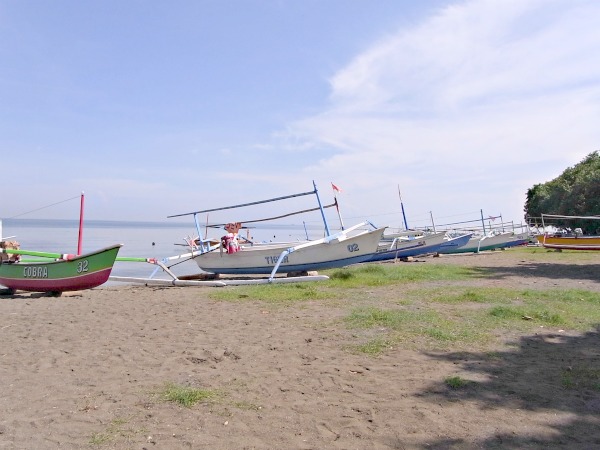I had a life plan for travelling. I formulated it after I’d gained confidence travelling solo around Morocco, driving a car from town to town, picking up hitchhikers and being harassed beyond belief in the souks. The plan was simple: whilst I was young I would explore far away countries; as I got older I would explore Europe; and in my dotage I would explore Britain, taking in sights I hadn’t explored such as Stonehenge and Salisbury cathedral.
My plan also included never revisiting somewhere I’d previously been, like the turtle, always moving forwards, never back.
That plan was rather foiled by my moving to Thailand; it’s now unlikely that I’ll ever do justice to Europe and the UK, and sometimes I revisit places I’ve already been, in this case Bali.
This trip to Bali was rather different from my previous one and wasn’t really about the temples and long walks through rice fields. It was far more about massages, great food and a few too many art galleries. (I visited three in as many days.)
But to begin at the beginning: the trip to my first destination, Lovina, was gruelling. I had an evening flight from Bangkok to Singapore. There I was supposed to wait two hours before flying on to Denpasar, the capital of Bali. Well, before departure the airline changed the scheduling of the Singapore-Denpasar flight twice before departure, each time increasing the delay. And then, whilst waiting in Singapore, the flight departure time was again changed a couple of times. In all I spent over 5 hours in the middle of the night in Changi airport. The only slight bit of “excitement” was when a group of soldiers, two toting machine guns, came through the airport checking the passports and boarding cards of all present.
So, exhausted and unkempt, I arrived in Bali. Then there was the mere matter of a three hour drive to Lovina along narrow, twisting roads across the island’s volcanic landscape. Normally such a thing would be a scenic delight, but struggling (and ultimately failing) to stay awake detracted from the joy of the situation.
Lovina, which I hadn’t visited before, is often described as a fishing village with black sand beaches. ‘Tis true there are fishing boats there, as this photo confirms.

Lovina Beach, Bali
The photo also confirms that the beaches aren’t black, more a nondescript grey.
Lovina itself is for the tourist little more than a couple of narrow streets lined with restaurants, bars and hotels leading down to the beach. Really, it could have been almost anywhere in the world.
Next was Ubud. Goodness, how it’s changed since last I was there! The place has developed at least a kilometre in all directions. Hotels that were previously surrounded by rice fields are now blocked in by resorts and restaurants. The centre of town is now wall-to-wall hotels, bars, restaurants and shops along the main streets, and a large proportion of the houses in backstreets have been converted to guesthouses. This really has stripped the place of much of its character.
Still, much of the cultural experience remains intact. There are more art galleries than one could shake a stick at, both commercial and otherwise. And I was able to take in a kecak (monkey dance) performance. Kecak, for those not familiar with it, is a form of musical drama performed primarily by men who sit in concentric circles, bare chested, chanting “chak” rhythmically – often contrapuntally – whilst moving their arms. Though it’s a fairly modern invention, dating from the 1930s, it feels positively primaeval and visceral. The plot is perhaps a little hard to follow, but is based upon the abduction of Sita by Ravana as recounted in the Ramayana.
I was fortunate to get a front row seat having arrived relatively early. However, with the sequel, described as a fire trance dance, I began doubting my good fortune. A pile of dried coconut husks was set in the centre of the temple courtyard, doused with lighter fuel and lit. Once the fuel had been reduced to burning embers a man riding a hobby horse proceeded to kick the embers about to a backing of more “chaks” from the chorus. The audience was “protected” by a low (and not particularly effective) metal barrier.
My final destination was Sanur, a fairly upmarket beach destination. Unfortunately, now almost all the land between beach and main road has been built over with large resort hotels making it difficult to move from the beachfront path into the town there being so few access points, so if going somewhere in town one is forced to choose between braving the town pavements or walking extra kilometres to find some way of getting from beach path into town. It’s a pity.
My lingering feeling is that Bali, whilst still magical in many ways, has become over-developed and become more anodyne. They’ve recently opened a second airport terminal to attract more tourists and have big plans to increase visitor numbers by millions a year. They call it progress, but it doesn’t feel like that.
[682]

Recent Comments